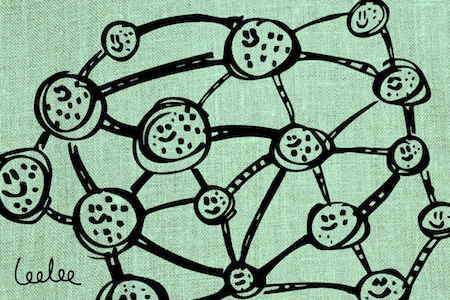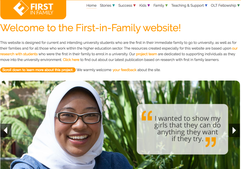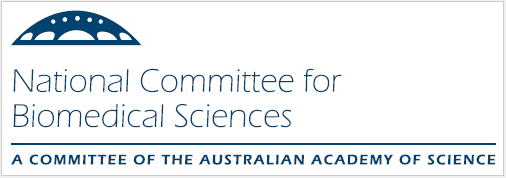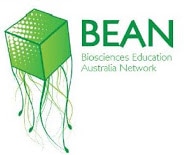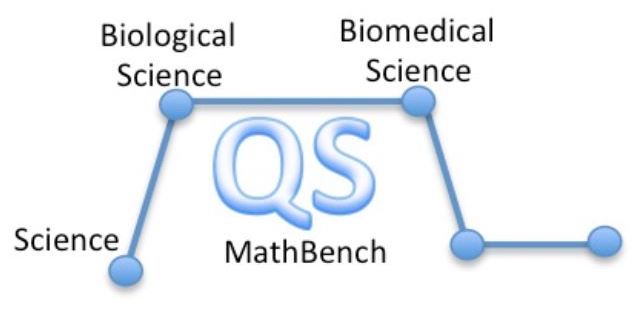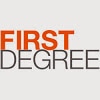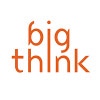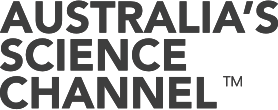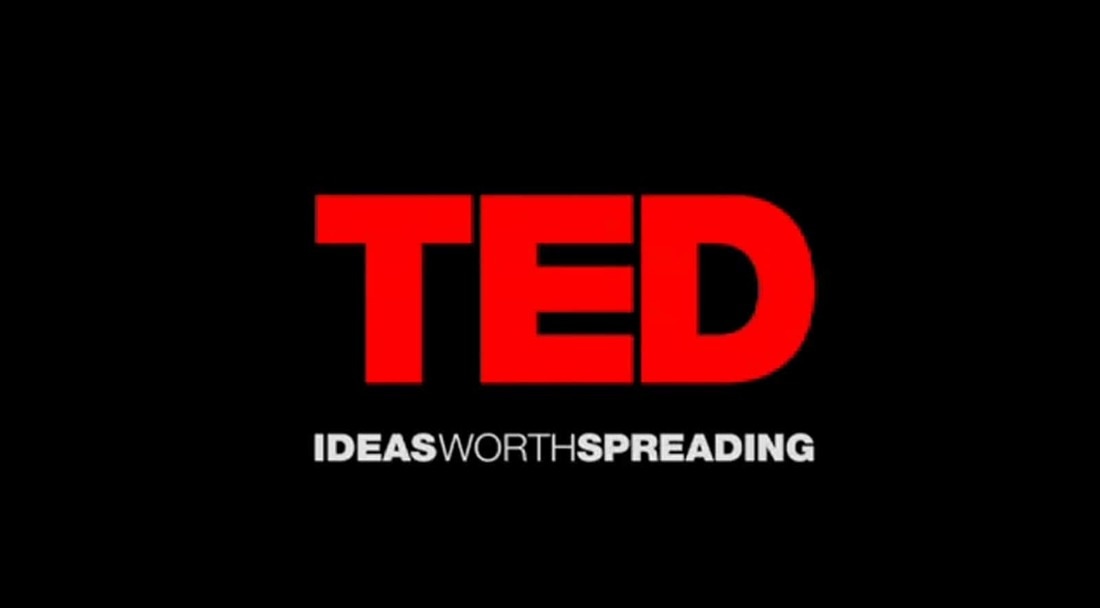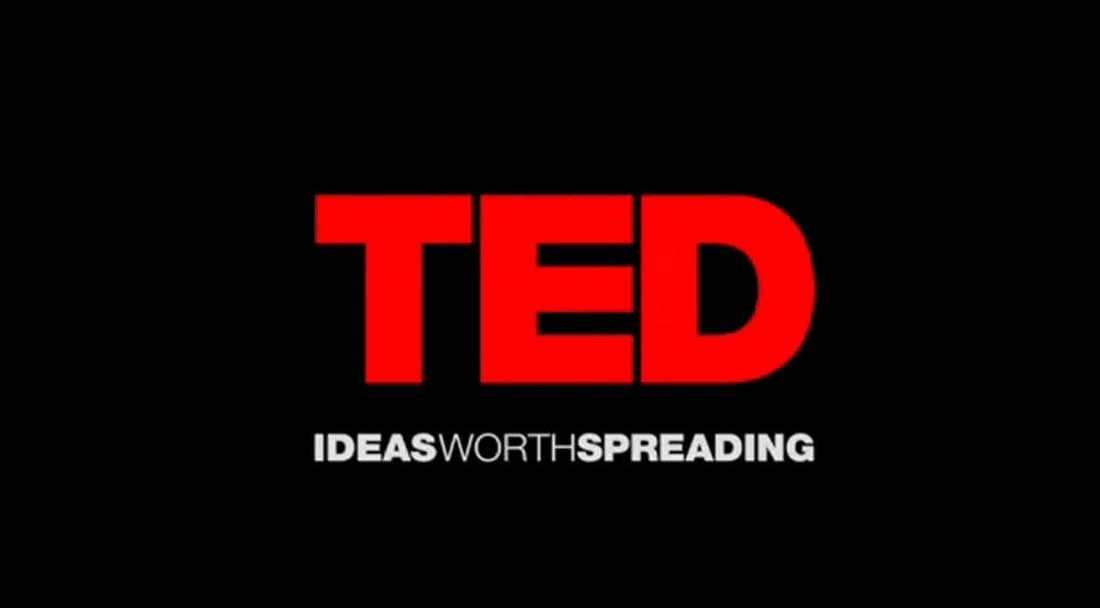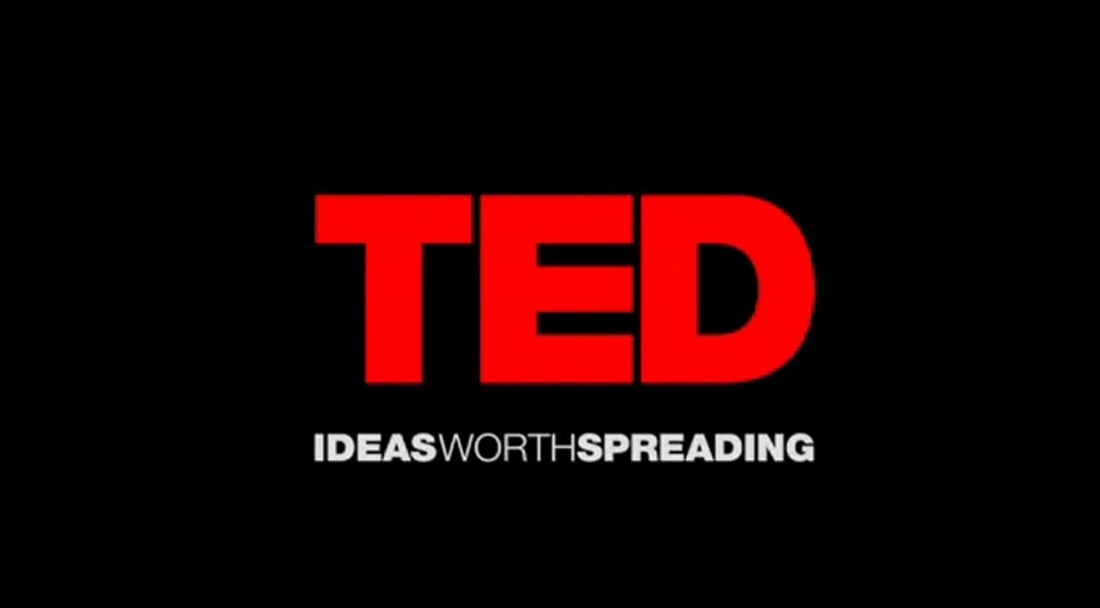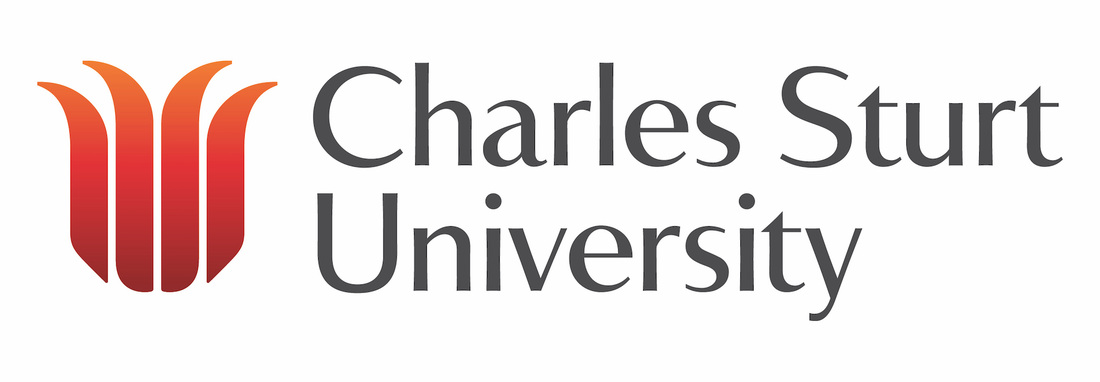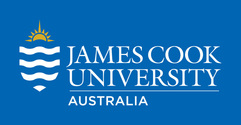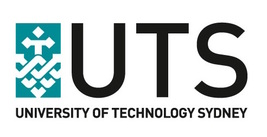You want to see your enrolled nursing students succeed. We want to help you do that.
|
Treat this site as your own. It's your collection of useful knowledge and resources. Connect your students to it. Connect your colleagues to it.
First off Explore LEARN to see what what you can share with your students to:
Use this page when you need to design or develop your enrolled nurse curriculum. Below, you'll find:
|
Bibliography of academic resources
Abele, C., Penprase, B. & Ternes, R. (2013). A closer look at academic probation and attrition: What courses are predictive of nursing student success? Nurse Education Today. 33(3), 258-261. doi: 10.1016/j.nedt.2011.11.017
Andrew, S. (1998). Self-efficacy as a predictor of academic performance in science. Journal of Advanced Nursing. 27(3), 596-603. doi: 10.1046/j.1365-2648.1998.00550.x
Andrew, S. (2002). The relationships amongst first year bachelor of Nursing students. Unpublished PhD, University of Wollongong, Wollongong, Australia.
Andrew, S., Salamonson, Y., Weaver, R., Smith, A., O'Reilly, R., & Taylor, C. (2008). Hate the course or hate to go: semester differences in first year nursing attrition. Nurse Education Today. 28(7), 865-872. doi: 10.1016/j.nedt.2007.12.007
Birks, M., Smithson, J., Wickett, D., & Holmes, D. (2015). Mapping Nurisng Pathways: A Diverse Modified Delphi Approach. SAGE Open. 1-12. doi: 10.1177/2158244015604902
Blegen, M.A., Goode, C. J., Park, Shin, H., Vaughn, T. & Spetz, J. (2013). Baccalaureate education in nursing and patient outcomes. Journal of Nursing Administration. 43(2), 89-94 doi: 10.1097/NNA.0b013e31827f2028
Boelen, M. G. & Kenny, A. (2009). Supporting enrolled nurse conversion - the impact of a compulsory bridging program. Nurse Education Today. 29, 533-537. doi: 10.1016/j.nedt.2008.11.015
Brown, S.J., White, S. & Power, N. (2017). Introductory Anatomy and physiology in undergraduate nursing curriculum. Advanced Physiology Education. 41, 56-61. doi: 10.1152/advan.00112.2016
Brunken, A. and Delly, P. (2011). Access to success Education, knowledge and Economy. 4(3), 143 -155. doi:10.1080/17496896.2010.556471
Casey, G. (1996). Analysis of Arkinsanya’s model of bionursing. Journal of Advanced Nursing. 23(6), 1065-1070. doi:10.1046/j.1365-648.1996.07311.x
Catterall, J., & Davis, J. (2012). Enhancing the student experience: transition from vocational education and training to higher education. Final Report 2012. ALTC Project 2009. Retrieved from http://hdl.voced.edu.au/10707/213627
Chemers, M., Hu, L. & Garcia, B. (2001). Academic self-efficacy and first-year college student performance and adjustment. Journal of Educational Psychology, 93(1), 55-64. doi: 10.1037/022-0663.93.1.55
Choi, N. (2005). Self-efficacy and self-concept as predictors of college students’ academic performance. Psychology in the Schools, 42(2), 197- 202.
Cox, J.L. & Crane, J (2014). Shifting the focus: increasing engagement and improving performance of nursing students in bioscience subjects using face-to-face workshops to reduce anxiety. International Journal of Innovation in Science and Mathematics Education. 22(7), 11-22. Retrieved from https://openjournals.library.sydney.edu.au/index.php/CAL/article/view/7594
Cox, J., Logan, P. & Curtis, A. (2014). Being A Nursing or Paramedic Student in Rural and Regional Australia: Profiles and Challenges In Ragusa, A.T. (editor) (2014). Rural Lifestyles, Community Well-being and Social Change. Bentham Science. (pp.300-337).
Craft, J., Hudson, P., Plenderleith, M., Wirihana, L. & Gordon, C. (2013). Commencing nursing students’ perceptions and anxiety of bioscience. Nurse Education Today. 33, 1399-1405. doi:10.106/j.nedt.2012.10.020
Craft, J. A., Hudson, P. B., Plenderleith, M. B., & Gordon, C. J. (2016). Enrolled nurses entering undergraduate studies at second year to become registered nurses – A mixed methods study on commencing perceptions of bioscience. Collegian. doi: 10.1016/j.colegn.2016.05.002
Crevacore, C., Jonas-Dwyer, D. & Nicol, P. (2016). The effect of an enrolled nursing registration pathway program on undergraduate nursing student’s confidence: A pre- and post-test study. Nurse Education Today. 39, 87-92. doi: 10.1016/j.nedt.2015.12.020
Dante, A., Valoppi, G., Saiani, L. & Palese, A. (2011). Factors associated with nursing students’ academic success or failure: A retrospective Italian multicentre study. Nurse Education Today. 31, 59-64. doi: 10.1016/j.nedt.2010.03.016
Doggrell, S. & Polkinghorne, A. (2015). Using the factors that have a positive impact on the retention of low socioeconomic students to prepare accelerated enrolled nurses for the science units of a nursing degree. A Practice Report. The International Journal of the First Year in Higher Education, 6(1), 187-194. doi: 10.5204/intjfyhe.v6i1.277
Doggrell, S.A. & Schaffer, S. (2016). Lack of recall of bioscience by nursing students. In Proceedings of the Australian Conference on Science and Mathematics Education (ACSME). University of Queensland, St. Lucia Campus, Brisbane, QLD.
Duffield C., Diers, D., O'Brien-Pallas L., Aisbett, C., Roche M., King, M. & Aisbett, K. (2011). Nursing staffing, nursing workload, the work environment and patient outcomes. Applied Nursing Research 24, 244–255, doi:10.1016/j.apnr.2009.12.004
Evans, S., Berry, C. & Mate, K. (2013). Targeting the bioscience-practice nexus to facilitate learning in first year nursing students. In ACSME Proceedings- Students in transition – the learner’s journey. p.122-129.
Gordon, C.J., Hudson, P.B., Plenderleith, M.B. & Fisher, M. (2016). Final year Australian Nursing students’ experiences with bioscience: A cross-sectional survey. Nursing and Health Sciences. doi: 10.1111.nhs.12310
Griffin, T. (2014). Disadvantaged learners and VET to higher education transitions Occasional Paper. NCVER/COAG Industry Skills Council. Retrieved from https://www.ncver.edu.au/publications/publications/all-publications/disadvantaged-learners-and-vet-to-higher-education-transitions#
Hutchinson, L., Mitchell, C. & John, W.S.T. (2011). The transition experience of Enrolled Nurses to a Bachelor of Nursing at an Australian university. Contemporary Nurse. 38(1-2), 191-200. doi:10.5172/conu.2011.38.1-2.191
Hylton, J. (2005). Relearning how to learn: Enrolled nurse transition to degree at a New Zealand rural satellite campus. Nurse Education Today, 25, 519-526. 10.1016/j.nedt.2005.05.010
Jacob, E., Chapman, Y., Birks, M., & Al-Motlaq, M. (2011). Entry criteria versus success in undergraduate nursing courses. Journal of Institutional Research, 16(2), 54-62.
Jacob, E.R., McKenna, L. & D’Amore, A. (2014). Comparisons of educational preparation of registered and enrolled nurses in Australia: The educator’s perspectives. Nurse Education in Practice. 14, 648-653 doi:10.1016/j.nepr.2014.07.005
Johnston, A.N. (2010). Anatomy for nurses: providing students with the best learning experience. Nurse Education in Practice. 10(4), 222-226. doi: 10.1016/j.nepr.2009.11.009
Johnston, A.N., Massa, H. & Burne, T.H. (2013). Digital lecture recording: a cautionary tale. Nurse Education in Practice. 13(1), 40-47. doi: 10.1016/j.nepr.2012.07.004
Jordan, S., & Hughes, D. (1998). Using bioscience knowledge in nursing: actions, interactions and reactions. Journal of Advanced Nursing. 27(5), 1060-1068. doi: 10.1046/j.1365-2648.1998.00611.x
Kift, S. (2009). Articulating a transition pedagogy to scaffold and to enhance the first year student learning experience in Australian higher education. Final Report for ALTC Senior Fellowship Program. ALTC/DEEWR NSW Australia.
Kift, S., Nelson, K. & Clarke, J. (2010). Transition pedagogy: a third-geneation approach to FYE - a case study of policy and practice for the higher education sector. The International Journal of the First Year in Higher Education. 1(1), 1-20. doi: 10.5204/intjfyhe.v1i1.13
Kirschner, P.A. & van Merrienboer., J. (2013). Do learners really know best? Urban legends in education. Educational Psychologist. 48(3), 169-183. doi: 10.1080/00461520.2013.804395
Laming, M. M., & Kelly, M. (2013). 'Wrong way - go back': preventing educational pathways from VET into higher education from becoming dead ends. Paper presented at the AVERTA 16th Annual Conference: VET Research at the Edge - Training for Diversity and Change, Fremantle, Western Australia, Australia. Retrieved from http://researchrepository.murdoch.edu.au/id/eprint/17634/
Lenehan, M.C. (2015). Effects of learning style knowledge o nursing major’s achievement, anxiety, anger and curiosity. Unpublished dissertation. St. John’s University, New York.
Logan, P.A. (2008). Science in undergraduate nursing programmes: generating symbiotic praxis. Unpublished PhD. Charles Sturt University, Australia.
Logan, PA., Anderson, J., Hillman, E., van Reyk, D., Cox. J., Salvage-Jones, J. & Johnston, ANB. (2017). Reaching Consensus for Core Concepts of Human Bioscience that support study of Pathophysiology and Introductory Pharmacology: A modified Delphi Study. (POSTER). STARS Melbourne 2017 Conference. Adelaide 1-4th July, 2017 ... coming soon.
Logan, P.A. & Cox, J. (2015). When level 2 is the 1st year at university: Evaluation of a preparation program for direct entry to pathophysiology and pharmacology. STARS Melbourne 2015 Conference. Melbourne 1-4th July, 2015. Retrieved from www.unistars.org/papers/STARS2015/04C.pdf
Logan, P.A., Cox, J. & Nielson, S. (2013). Short online test and survey as an indicator of student risk in bioscience at a regional university. International Journal of Innovation in Science and Mathematics Education Special Edition. 21(3), 17-29. Retrieved from https://openjournals.library.sydney.edu.au/index.php/CAL/article/view/7197
Logan, P.A., Dunphy, J., McClean, R., Ireland, M. (2013). Six years of teaching human bioscience, pathophysiology and pharmacology: a journey of reflective practice. International Journal of Innovation in Science and Mathematics Education Special Edition. 21(3), 82-103. Retrieved from http://openjournals.library.usyd.edu.au/index.php/CAL/article/view/7204/7673
Logan, PA., van Reyk, D., Cox, Jl., Salvage-Jones, J., Anderson, J., Hillman, E., & Johnston, ANB. (2017). University after VET: The challenges faced by the Enrolled Nurse. Journal of Perspectives in Applied Academic Practice ... coming soon.
Massey, D., Chaboyer, W., & Anderson, V. (2016). What factors influence ward nurses’ recognition of and response to patient deterioration? An integrative review of the literature. Nursing Open. doi:10.1002/nop2.53
Margolis, H. & McCabe, P. (2006). Improving self-efficacy: what to do, what to say. Intervention in School and Clinic, 41(4), 218-227.
McCarey, M., Barr, T., & Rattray, J. (2007). Predictors of academic performance in a cohort of pre-registration nursing students. Nurse Education Today, 27(4), 357-364. doi: 10.1016/j.nedt.2006.05.017
McVicar, A., Andrew, S. & Kemble, R. (2014). Biosciences within the pre-registration (pre-requisite) curriculum: An integrative review of curriculum interventions 1990-2012. Nurse Education Today. 34, 560-568. doi: 10.1016/j.nedt.2013.08.012
McVicar, A., Andrew, S. & Kemble, R. (2015). The ‘bioscience problem’ for nursing students: An integrative review of published evaluations for year 1 bioscience, and proposed directions for curriculum development. Nurse Education Today. 35, 500-509. doi:10.1016/j.nedt.2014.11.003
Northall, T., Ramjan, L.M., Everett, B. & Salamonson, Y. (2016). Retention and academic performance of undergraduate nursing students with advanced standing: a mixed methods study. Nurse Education Today. 39, 26-31. doi: 10/1016/j.nedt.2016.01.010
O’Donnell, H. (2011). Expectations and voluntary attrition in nursing students. Nurse Education in Practice, 11, 54-63. doi: 10.1016/j.nepr.2010.08.002
Owens, A. & Moroney, T. (2017). Shifting the load: improving bioscience performance in undergraduate nurses through student focused learning. Collegian. 24, 37-43. doi:10.1016/j.colegn.2015.09.006
Pitt, V., Powis, D., Levett-Jones, T. & Hunter, S. (2012). Factors influencing students’ academic and clinical performance and attrition: An integrative literature review. Nurse Education Today. 32, 903-913. doi: 10.1016/j.nedt.2012.04.011
Prowse, M.A. & Lyne, P.A. (2000). Revealing the contribution of bioscience-based nursing knowledge to clinically effective patient care. Clinical Effectiveness in Nursing. 4(2), 67-74. doi:10.1054/cein.2000.0105
Pryjmachuk, S., Easton, K. & Littlewood, A. (2008). Nurse Education: factors associated with attrition. Journal of Advanced Nursing, 65(1), 149-160. Doi: 10.1111/j.1365-2648.2008.04852.x
Rafferty, B. & Kyriacos, U. (2016). Final year nursing students’ self-reported understanding of the relevance of bioscience. International Journal of Nursing and Midwifery. 8(5), 35-46. doi: 10.5897/IJNM2016.0208
Ralph, N., Birks, M., Chapman, Y., Muldoon, N. & McPherson, C. (2013). From EN to BN to RN: An exploration and analysis of the literature. Contemporary Nurse. 43(2), 225-236. doi: 10.5172/conu.2013.43.2.225
Ralph, N., Birks, M., Cant, R., Tie, Y.C. & Hillman, E. (2017). How should science be taught to nurses? Preferences of registered nurses and sciecne teaching academics. Collegian. doi: 10.1016/j.colegn.2017.01.004
Salamonson, Y., Andrew, S., & Everett, B. (2009). Academic engagement and disengagement as predictors of performance in pathophysiology among nursing students. Contemporary Nurse. 32(1-2), 123-132. doi: 10.5172/conu.32.1-2.123
Schaffer, S, Doggrell, S.A. & Dellamagne, C. (2012). Transferring a successful strategy for supporting accelerated nursing students from a small to large cohort. In Karen J. Nelson & Sally M. Kift. (eds). 15th International First year in Higher Education Conference: New Horizons. 26-29 June 2012, Sofitel Brisbane Central, Brisbane. QLD.
Shea, S., Lysaght, P., & Tanner, K. (2012). Stepping into higher education from vocational education sector in Australia: Student perceptions and experiences. Journal of Vocational Education and Training. 64(3), 261-277. doi:10.1080/13636820.2012.691532
Thornton, T. (1997). Attitudes towards the relevance of biological, behavioural and social sciences in nursing education. Journal of Advanced Nursing, 26(1), 180-186. doi: 10.1046/j.1365-2648.1997.1997026180.x
Towers, M., Cooke, M., Watson, B., Buys, N & Wilson, K. (2015). Exploring the transiiton experiences of students entering into preregistration nursing degree programs with previous professional nursing qualifications: an integrative review. Journal of Clinical Nursing. 24, 1174-1188. doi: 10.1111/jocn.12756
Twigg D.E., Geelhoed E.A., Bremner A.P. & Duffield C.M. (2013). The economic benefits of increased levels of nursing care in the hospital setting. Journal of Advanced Nursing 69(10), 2253–2261. doi: 10.1111/jan.12109
Urwin, S., Stanley, R., Jones, M., Gallagher, A., Wainwright, P., & Perkins, A. (2010). Understanding student nurse attrition: learning from the literature. Nurse Education Today, 30, 202-207. doi: 10.1016/j.nedt.2009.07.014
Uyehara, J., Magnussen, L., Itano, J. & Zhang, S. (2007). Facilitating program and NCLEX-RN success in a generic BSN program. Nursing Forum. 42(1), 31-38.
van Rooyan, P., Dixon, A., Dixon, G., & Wells, C. (2006). Entry criteria as a predictor of performance in an undergraduate nursing degree programme. Nurse Education Today, 26, 593-600. doi: 10.1016/j.nedt.2006.02.002
van Reyk, D., Logan, PA., Cox. J., Anderson, J., Salvage-Jones, J. Hillman, E., & Johnston, ANB. (2017). Enrolled nurse transition: development of a university science preparation program for direct entry to 2nd Year. (Emerging Initiatives peer reviewed paper). STARS Melbourne 2017 Conference. Adelaide 1-4th July, 2017 ... coming soon.
Whyte, D. G., Madigan, V., & Drinkwater, E. J. (2011). Predictors of academic performance of nursing and paramedic students in first year bioscience. Nurse Education Today, 31(8), 849-854. doi:10.1016/j.nedt.2010.12.021
Wilson A., Chur-Hansen A., Marshall A. & Air T. (2011). Should nursing-related work experience be a prerequisite for acceptance into a nursing programme?: A study of students' reasons for withdrawing from undergraduate nursing at an Australian university. Nurse Education Today 31(5), 456-60. doi:10.1016/j.nedt.2010.09.005
Wilson, K.L, Murphy, K.A., Pearson, A.G., Wallace, B.M., Reher, V.G.S & Buys, N. (2014). Understanding the early transition needs of diverse commencing university students in a health faculty: informing effective intervention practices. Studies in Higher Education. doi: 10.1080/03075079.2014.966070
Wong, J., & Wong, S. (1999). Contribution of basic sciences to academic success in nursing education. International Journal of Nursing Studies, 36(4), 345-354. doi: 10.1016/S0020-7489(99)00032-2
Andrew, S. (1998). Self-efficacy as a predictor of academic performance in science. Journal of Advanced Nursing. 27(3), 596-603. doi: 10.1046/j.1365-2648.1998.00550.x
Andrew, S. (2002). The relationships amongst first year bachelor of Nursing students. Unpublished PhD, University of Wollongong, Wollongong, Australia.
Andrew, S., Salamonson, Y., Weaver, R., Smith, A., O'Reilly, R., & Taylor, C. (2008). Hate the course or hate to go: semester differences in first year nursing attrition. Nurse Education Today. 28(7), 865-872. doi: 10.1016/j.nedt.2007.12.007
Birks, M., Smithson, J., Wickett, D., & Holmes, D. (2015). Mapping Nurisng Pathways: A Diverse Modified Delphi Approach. SAGE Open. 1-12. doi: 10.1177/2158244015604902
Blegen, M.A., Goode, C. J., Park, Shin, H., Vaughn, T. & Spetz, J. (2013). Baccalaureate education in nursing and patient outcomes. Journal of Nursing Administration. 43(2), 89-94 doi: 10.1097/NNA.0b013e31827f2028
Boelen, M. G. & Kenny, A. (2009). Supporting enrolled nurse conversion - the impact of a compulsory bridging program. Nurse Education Today. 29, 533-537. doi: 10.1016/j.nedt.2008.11.015
Brown, S.J., White, S. & Power, N. (2017). Introductory Anatomy and physiology in undergraduate nursing curriculum. Advanced Physiology Education. 41, 56-61. doi: 10.1152/advan.00112.2016
Brunken, A. and Delly, P. (2011). Access to success Education, knowledge and Economy. 4(3), 143 -155. doi:10.1080/17496896.2010.556471
Casey, G. (1996). Analysis of Arkinsanya’s model of bionursing. Journal of Advanced Nursing. 23(6), 1065-1070. doi:10.1046/j.1365-648.1996.07311.x
Catterall, J., & Davis, J. (2012). Enhancing the student experience: transition from vocational education and training to higher education. Final Report 2012. ALTC Project 2009. Retrieved from http://hdl.voced.edu.au/10707/213627
Chemers, M., Hu, L. & Garcia, B. (2001). Academic self-efficacy and first-year college student performance and adjustment. Journal of Educational Psychology, 93(1), 55-64. doi: 10.1037/022-0663.93.1.55
Choi, N. (2005). Self-efficacy and self-concept as predictors of college students’ academic performance. Psychology in the Schools, 42(2), 197- 202.
Cox, J.L. & Crane, J (2014). Shifting the focus: increasing engagement and improving performance of nursing students in bioscience subjects using face-to-face workshops to reduce anxiety. International Journal of Innovation in Science and Mathematics Education. 22(7), 11-22. Retrieved from https://openjournals.library.sydney.edu.au/index.php/CAL/article/view/7594
Cox, J., Logan, P. & Curtis, A. (2014). Being A Nursing or Paramedic Student in Rural and Regional Australia: Profiles and Challenges In Ragusa, A.T. (editor) (2014). Rural Lifestyles, Community Well-being and Social Change. Bentham Science. (pp.300-337).
Craft, J., Hudson, P., Plenderleith, M., Wirihana, L. & Gordon, C. (2013). Commencing nursing students’ perceptions and anxiety of bioscience. Nurse Education Today. 33, 1399-1405. doi:10.106/j.nedt.2012.10.020
Craft, J. A., Hudson, P. B., Plenderleith, M. B., & Gordon, C. J. (2016). Enrolled nurses entering undergraduate studies at second year to become registered nurses – A mixed methods study on commencing perceptions of bioscience. Collegian. doi: 10.1016/j.colegn.2016.05.002
Crevacore, C., Jonas-Dwyer, D. & Nicol, P. (2016). The effect of an enrolled nursing registration pathway program on undergraduate nursing student’s confidence: A pre- and post-test study. Nurse Education Today. 39, 87-92. doi: 10.1016/j.nedt.2015.12.020
Dante, A., Valoppi, G., Saiani, L. & Palese, A. (2011). Factors associated with nursing students’ academic success or failure: A retrospective Italian multicentre study. Nurse Education Today. 31, 59-64. doi: 10.1016/j.nedt.2010.03.016
Doggrell, S. & Polkinghorne, A. (2015). Using the factors that have a positive impact on the retention of low socioeconomic students to prepare accelerated enrolled nurses for the science units of a nursing degree. A Practice Report. The International Journal of the First Year in Higher Education, 6(1), 187-194. doi: 10.5204/intjfyhe.v6i1.277
Doggrell, S.A. & Schaffer, S. (2016). Lack of recall of bioscience by nursing students. In Proceedings of the Australian Conference on Science and Mathematics Education (ACSME). University of Queensland, St. Lucia Campus, Brisbane, QLD.
Duffield C., Diers, D., O'Brien-Pallas L., Aisbett, C., Roche M., King, M. & Aisbett, K. (2011). Nursing staffing, nursing workload, the work environment and patient outcomes. Applied Nursing Research 24, 244–255, doi:10.1016/j.apnr.2009.12.004
Evans, S., Berry, C. & Mate, K. (2013). Targeting the bioscience-practice nexus to facilitate learning in first year nursing students. In ACSME Proceedings- Students in transition – the learner’s journey. p.122-129.
Gordon, C.J., Hudson, P.B., Plenderleith, M.B. & Fisher, M. (2016). Final year Australian Nursing students’ experiences with bioscience: A cross-sectional survey. Nursing and Health Sciences. doi: 10.1111.nhs.12310
Griffin, T. (2014). Disadvantaged learners and VET to higher education transitions Occasional Paper. NCVER/COAG Industry Skills Council. Retrieved from https://www.ncver.edu.au/publications/publications/all-publications/disadvantaged-learners-and-vet-to-higher-education-transitions#
Hutchinson, L., Mitchell, C. & John, W.S.T. (2011). The transition experience of Enrolled Nurses to a Bachelor of Nursing at an Australian university. Contemporary Nurse. 38(1-2), 191-200. doi:10.5172/conu.2011.38.1-2.191
Hylton, J. (2005). Relearning how to learn: Enrolled nurse transition to degree at a New Zealand rural satellite campus. Nurse Education Today, 25, 519-526. 10.1016/j.nedt.2005.05.010
Jacob, E., Chapman, Y., Birks, M., & Al-Motlaq, M. (2011). Entry criteria versus success in undergraduate nursing courses. Journal of Institutional Research, 16(2), 54-62.
Jacob, E.R., McKenna, L. & D’Amore, A. (2014). Comparisons of educational preparation of registered and enrolled nurses in Australia: The educator’s perspectives. Nurse Education in Practice. 14, 648-653 doi:10.1016/j.nepr.2014.07.005
Johnston, A.N. (2010). Anatomy for nurses: providing students with the best learning experience. Nurse Education in Practice. 10(4), 222-226. doi: 10.1016/j.nepr.2009.11.009
Johnston, A.N., Massa, H. & Burne, T.H. (2013). Digital lecture recording: a cautionary tale. Nurse Education in Practice. 13(1), 40-47. doi: 10.1016/j.nepr.2012.07.004
Jordan, S., & Hughes, D. (1998). Using bioscience knowledge in nursing: actions, interactions and reactions. Journal of Advanced Nursing. 27(5), 1060-1068. doi: 10.1046/j.1365-2648.1998.00611.x
Kift, S. (2009). Articulating a transition pedagogy to scaffold and to enhance the first year student learning experience in Australian higher education. Final Report for ALTC Senior Fellowship Program. ALTC/DEEWR NSW Australia.
Kift, S., Nelson, K. & Clarke, J. (2010). Transition pedagogy: a third-geneation approach to FYE - a case study of policy and practice for the higher education sector. The International Journal of the First Year in Higher Education. 1(1), 1-20. doi: 10.5204/intjfyhe.v1i1.13
Kirschner, P.A. & van Merrienboer., J. (2013). Do learners really know best? Urban legends in education. Educational Psychologist. 48(3), 169-183. doi: 10.1080/00461520.2013.804395
Laming, M. M., & Kelly, M. (2013). 'Wrong way - go back': preventing educational pathways from VET into higher education from becoming dead ends. Paper presented at the AVERTA 16th Annual Conference: VET Research at the Edge - Training for Diversity and Change, Fremantle, Western Australia, Australia. Retrieved from http://researchrepository.murdoch.edu.au/id/eprint/17634/
Lenehan, M.C. (2015). Effects of learning style knowledge o nursing major’s achievement, anxiety, anger and curiosity. Unpublished dissertation. St. John’s University, New York.
Logan, P.A. (2008). Science in undergraduate nursing programmes: generating symbiotic praxis. Unpublished PhD. Charles Sturt University, Australia.
Logan, PA., Anderson, J., Hillman, E., van Reyk, D., Cox. J., Salvage-Jones, J. & Johnston, ANB. (2017). Reaching Consensus for Core Concepts of Human Bioscience that support study of Pathophysiology and Introductory Pharmacology: A modified Delphi Study. (POSTER). STARS Melbourne 2017 Conference. Adelaide 1-4th July, 2017 ... coming soon.
Logan, P.A. & Cox, J. (2015). When level 2 is the 1st year at university: Evaluation of a preparation program for direct entry to pathophysiology and pharmacology. STARS Melbourne 2015 Conference. Melbourne 1-4th July, 2015. Retrieved from www.unistars.org/papers/STARS2015/04C.pdf
Logan, P.A., Cox, J. & Nielson, S. (2013). Short online test and survey as an indicator of student risk in bioscience at a regional university. International Journal of Innovation in Science and Mathematics Education Special Edition. 21(3), 17-29. Retrieved from https://openjournals.library.sydney.edu.au/index.php/CAL/article/view/7197
Logan, P.A., Dunphy, J., McClean, R., Ireland, M. (2013). Six years of teaching human bioscience, pathophysiology and pharmacology: a journey of reflective practice. International Journal of Innovation in Science and Mathematics Education Special Edition. 21(3), 82-103. Retrieved from http://openjournals.library.usyd.edu.au/index.php/CAL/article/view/7204/7673
Logan, PA., van Reyk, D., Cox, Jl., Salvage-Jones, J., Anderson, J., Hillman, E., & Johnston, ANB. (2017). University after VET: The challenges faced by the Enrolled Nurse. Journal of Perspectives in Applied Academic Practice ... coming soon.
Massey, D., Chaboyer, W., & Anderson, V. (2016). What factors influence ward nurses’ recognition of and response to patient deterioration? An integrative review of the literature. Nursing Open. doi:10.1002/nop2.53
Margolis, H. & McCabe, P. (2006). Improving self-efficacy: what to do, what to say. Intervention in School and Clinic, 41(4), 218-227.
McCarey, M., Barr, T., & Rattray, J. (2007). Predictors of academic performance in a cohort of pre-registration nursing students. Nurse Education Today, 27(4), 357-364. doi: 10.1016/j.nedt.2006.05.017
McVicar, A., Andrew, S. & Kemble, R. (2014). Biosciences within the pre-registration (pre-requisite) curriculum: An integrative review of curriculum interventions 1990-2012. Nurse Education Today. 34, 560-568. doi: 10.1016/j.nedt.2013.08.012
McVicar, A., Andrew, S. & Kemble, R. (2015). The ‘bioscience problem’ for nursing students: An integrative review of published evaluations for year 1 bioscience, and proposed directions for curriculum development. Nurse Education Today. 35, 500-509. doi:10.1016/j.nedt.2014.11.003
Northall, T., Ramjan, L.M., Everett, B. & Salamonson, Y. (2016). Retention and academic performance of undergraduate nursing students with advanced standing: a mixed methods study. Nurse Education Today. 39, 26-31. doi: 10/1016/j.nedt.2016.01.010
O’Donnell, H. (2011). Expectations and voluntary attrition in nursing students. Nurse Education in Practice, 11, 54-63. doi: 10.1016/j.nepr.2010.08.002
Owens, A. & Moroney, T. (2017). Shifting the load: improving bioscience performance in undergraduate nurses through student focused learning. Collegian. 24, 37-43. doi:10.1016/j.colegn.2015.09.006
Pitt, V., Powis, D., Levett-Jones, T. & Hunter, S. (2012). Factors influencing students’ academic and clinical performance and attrition: An integrative literature review. Nurse Education Today. 32, 903-913. doi: 10.1016/j.nedt.2012.04.011
Prowse, M.A. & Lyne, P.A. (2000). Revealing the contribution of bioscience-based nursing knowledge to clinically effective patient care. Clinical Effectiveness in Nursing. 4(2), 67-74. doi:10.1054/cein.2000.0105
Pryjmachuk, S., Easton, K. & Littlewood, A. (2008). Nurse Education: factors associated with attrition. Journal of Advanced Nursing, 65(1), 149-160. Doi: 10.1111/j.1365-2648.2008.04852.x
Rafferty, B. & Kyriacos, U. (2016). Final year nursing students’ self-reported understanding of the relevance of bioscience. International Journal of Nursing and Midwifery. 8(5), 35-46. doi: 10.5897/IJNM2016.0208
Ralph, N., Birks, M., Chapman, Y., Muldoon, N. & McPherson, C. (2013). From EN to BN to RN: An exploration and analysis of the literature. Contemporary Nurse. 43(2), 225-236. doi: 10.5172/conu.2013.43.2.225
Ralph, N., Birks, M., Cant, R., Tie, Y.C. & Hillman, E. (2017). How should science be taught to nurses? Preferences of registered nurses and sciecne teaching academics. Collegian. doi: 10.1016/j.colegn.2017.01.004
Salamonson, Y., Andrew, S., & Everett, B. (2009). Academic engagement and disengagement as predictors of performance in pathophysiology among nursing students. Contemporary Nurse. 32(1-2), 123-132. doi: 10.5172/conu.32.1-2.123
Schaffer, S, Doggrell, S.A. & Dellamagne, C. (2012). Transferring a successful strategy for supporting accelerated nursing students from a small to large cohort. In Karen J. Nelson & Sally M. Kift. (eds). 15th International First year in Higher Education Conference: New Horizons. 26-29 June 2012, Sofitel Brisbane Central, Brisbane. QLD.
Shea, S., Lysaght, P., & Tanner, K. (2012). Stepping into higher education from vocational education sector in Australia: Student perceptions and experiences. Journal of Vocational Education and Training. 64(3), 261-277. doi:10.1080/13636820.2012.691532
Thornton, T. (1997). Attitudes towards the relevance of biological, behavioural and social sciences in nursing education. Journal of Advanced Nursing, 26(1), 180-186. doi: 10.1046/j.1365-2648.1997.1997026180.x
Towers, M., Cooke, M., Watson, B., Buys, N & Wilson, K. (2015). Exploring the transiiton experiences of students entering into preregistration nursing degree programs with previous professional nursing qualifications: an integrative review. Journal of Clinical Nursing. 24, 1174-1188. doi: 10.1111/jocn.12756
Twigg D.E., Geelhoed E.A., Bremner A.P. & Duffield C.M. (2013). The economic benefits of increased levels of nursing care in the hospital setting. Journal of Advanced Nursing 69(10), 2253–2261. doi: 10.1111/jan.12109
Urwin, S., Stanley, R., Jones, M., Gallagher, A., Wainwright, P., & Perkins, A. (2010). Understanding student nurse attrition: learning from the literature. Nurse Education Today, 30, 202-207. doi: 10.1016/j.nedt.2009.07.014
Uyehara, J., Magnussen, L., Itano, J. & Zhang, S. (2007). Facilitating program and NCLEX-RN success in a generic BSN program. Nursing Forum. 42(1), 31-38.
van Rooyan, P., Dixon, A., Dixon, G., & Wells, C. (2006). Entry criteria as a predictor of performance in an undergraduate nursing degree programme. Nurse Education Today, 26, 593-600. doi: 10.1016/j.nedt.2006.02.002
van Reyk, D., Logan, PA., Cox. J., Anderson, J., Salvage-Jones, J. Hillman, E., & Johnston, ANB. (2017). Enrolled nurse transition: development of a university science preparation program for direct entry to 2nd Year. (Emerging Initiatives peer reviewed paper). STARS Melbourne 2017 Conference. Adelaide 1-4th July, 2017 ... coming soon.
Whyte, D. G., Madigan, V., & Drinkwater, E. J. (2011). Predictors of academic performance of nursing and paramedic students in first year bioscience. Nurse Education Today, 31(8), 849-854. doi:10.1016/j.nedt.2010.12.021
Wilson A., Chur-Hansen A., Marshall A. & Air T. (2011). Should nursing-related work experience be a prerequisite for acceptance into a nursing programme?: A study of students' reasons for withdrawing from undergraduate nursing at an Australian university. Nurse Education Today 31(5), 456-60. doi:10.1016/j.nedt.2010.09.005
Wilson, K.L, Murphy, K.A., Pearson, A.G., Wallace, B.M., Reher, V.G.S & Buys, N. (2014). Understanding the early transition needs of diverse commencing university students in a health faculty: informing effective intervention practices. Studies in Higher Education. doi: 10.1080/03075079.2014.966070
Wong, J., & Wong, S. (1999). Contribution of basic sciences to academic success in nursing education. International Journal of Nursing Studies, 36(4), 345-354. doi: 10.1016/S0020-7489(99)00032-2
